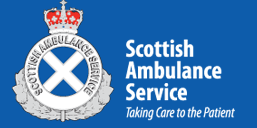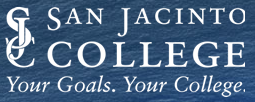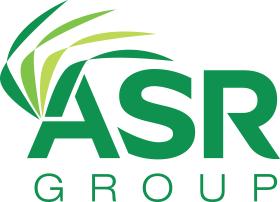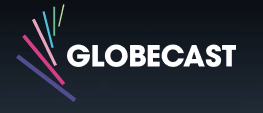USA
800 691 9120
UK
01225 704844
We use cookies on our website to analyze website usage and to help secure the website against misuse. Advertising and functional cookies are not used in our site or our web application products.
By clicking “Accept Essential Cookies Only”, you consent to us placing these cookies.
Virtually no part of the economy has been spared from the impact of the global pandemic. Unfortunately, IT budgets were not immune from the effects of the virus, and CIOs will need to adjust to new budget restrictions. As reported by CIO Dive, Forrester expects that IT budgets will be nearly 6.3% lower than they were in 2019. Forrester's Andrew Bartels noted that CIOs should be examining cuts they may need to make in areas like hardware and new project spending, and what cuts they can make to software, outsourcing and telecommunications staffing. Complimenting Forrester's analysis, Gartner's Chris Ganley observed that strategic cost management is going to become important for organizations to manage budget reductions. He advocates that firms work to eliminate costs, not just freeze them with the intent of implementing the spend at a later date. The question then, is how do CIOs efficiently make budget decisions that have the greatest financial impact but the least operational effect?
Clearly, as in almost all decision-making scenarios, current and accurate information is critical. One information tool at most CIOs disposals is a robust IT Asset Management (ITAM) toolset. Using the reports on the inventory, configuration of the physical assets, software licensing and utilization and cloud assets, IT management can identify under-utilized, obsolete and excess IT assets. This information coupled with data on maintenance costs for both hardware and software spending, can provide a roadmap for spending cuts that will have minimal impact on operations.
When looking at hardware assets, perhaps the most visible area of potential cost-elimination lies with legacy systems. As CIO Dive reported, "failure to modernize the tech space" can create wasted budget dollars and potential lost business. At some point it becomes more difficult and expensive to keep legacy systems running where organizations will need to spend more to upgrade when those systems no longer work. In addition, legacy systems can create potential liabilities, particularly with regard to the EU's General Data Protection Regulation (GDPR) law. London-based Bird & Bird Attorney, Matthew Buckwell noted that "The guidelines make it clear that legacy systems are clearly in scope in the same way as new systems, and if the legacy system does not meet GDPR obligations then it cannot be used to process personal data." He also noted that legacy systems are a "key risk" companies face in potentially violating the terms of the GDPR and the changes may "add considerable cost for companies that rely on older, integrated systems that are not easily updated or removed." Firms can use their ITAM solutions to identify legacy systems that may result in non-compliance and use the information to take remedial actions.

The inventory and configuration reports provided by an IT Asset Management solution can quickly identify legacy hardware. In addition, the software inventory reports can be used to identify what systems the legacy system impacts. Data from the system's Configuration Management Database (CMDB) can quickly identify the costs associated with operating the legacy systems. This includes whether the system is under a commercial maintenance agreement or if it must be maintained by the organization or as a third party, and if the software is no longer supported by the publisher. This information can then be used to decide whether it is cost efficient to retain the legacy equipment or to allocate some of the capital budget to replace it. In many cases it is more cost efficient to replace older systems with new, thus reducing ongoing costs well into the future.
The Software Asset Management (SAM) component of the ITAM software is a key tool in reducing software costs without impacting operational efficiency. According to Gartner, organizations can cut software spending using SAM as part of three best practices. The first action that Gartner suggests is to use SAM to optimize complex software configurations. The company reports that the default configuration for most software is typically the most expensive and by reducing the complexity and high cost of the software offers an opportunity to cut spending. A SAM solution can be used to identify the components of the software configuration and provide a roadmap for simplification. Gartner feels that these changes are not obvious, and appear simple in hindsight, but the savings to the company could be in the millions of dollars. In addition to its use in optimizing software configurations, SAM can be used to recycle software licenses. Recycling software licenses involves the recovery of unused license rights for redeployment to avoid new license purchases. Recycling software will reduce software spending along with support and maintenance costs. Recycling requires strong process control, which is where a SAM solution provides critical information. SAM allows a company to identify unused, underused or misused software. In many cases a user may have a piece of software installed that is never used or the firm could own more licenses that it has users. SAM tools can pinpoint these situations. Gartner recommends the use of a SAM tool as part of software cost reduction as it can automate, accelerate and improve manual processes and will provide dividends over manual alternatives, often paying for itself. By using a SAM tool IT managers can identify unnecessary software costs, make informed and effective budget reductions with long-term benefits while not impacting operations (Gartner clients can read more in the report "Cut Software Spending Safely With SAM.")
In addition to reusing under-utilized software, IT managers can use the information on over-licensed software to renegotiate both software licenses and maintenance contracts. With the information on excess licenses, IT and supply-chain professionals can tailor software agreements that are optimized for the company's needs, lowering future software costs.
It is axiomatic that companies can reduce IT operating costs by shifting premises-based functions to the cloud. However, cloud-based assets need to be managed in the same way that traditional IT assets are managed. That means monitoring server capacity, data storage, software usage and licensing levels as if they were behind the firewall. A comprehensive ITAM solution can help IT management control cloud-based expenses and manage the assets.

According to an article published by The ITAM Review, companies can experience two or three cloud-based renewals each week. That's in contrast to planning for a Microsoft Enterprise Agreement renewal for a year and a half. The key to strategic contract renewals is to have the information that enables the IT team to plan ahead. Using the report available from the asset management component of the ITAM system, teams can create a schedule of renewals due in each fiscal quarter. Using their ITAM solution IT management can identify three key data points: a) when the renewal is due, b) the renewal term and c) the contract value and the number of seats covered by the contract. This information enables management to target specific renewals. Additional information needed to manage contract renewal can be obtained from ITAM system reports. Some of this data includes vendor name, the departments the software supports and what the service is used for, the contract owner and the cost center being charged, the usage levels and the value to the operation. In addition, SAAS services can be logged as service assets in the system, and their monthly costs, user counts and utilization can be imported from the provider's API. Systems that are under-utilized or not critical to the operations can be allowed to lapse, decreasing the strain on reduced budgets. Collectively, this information provides IT management with a multi-dimensional picture of its cloud-based-assets and leads to better renewal decisions.
Using the right ITAM tools, cloud-based assets can be managed in a manner similar to premises-based assets. For example, the ITAM tool can discover cloud assets in the same way that it discovers networked assets. In doing so, management can identify duplicate contracts, services providing excess server or storage capacity and contracts initiated by individuals (a.k.a "ghost IT") that are being charged to the IT budget. This information can be used to eliminate or reduce costs, while not impairing operations. Similarly, the system can discover more information about the cloud assets from service APIs such as GCP, AWS, Azure, thus providing IT management with a clear picture of what services are being provided, utilization and capacity. In addition, the right ITAM system can integrate with other tools and web services that contain detailed information about the company's cloud assets.

Intelligent IT spending is even more critical when budgets are under review due to the global downturn caused by the pandemic. In addition, IT assets are more important than ever as they are critical to supporting remote workers, especially in work-from-home environments. Consequently, it is important to have as much information about the IT infrastructure as possible when making budget decisions. With the right information at hand, IT management can potentially identify areas where budget reductions can be made without impacting operations, or where existing budget dollars can be applied to support new IT initiatives. Using an ITAM solution can provide the information required to make these types of decisions.
Free instances are free forever and can show demo data or your data.































